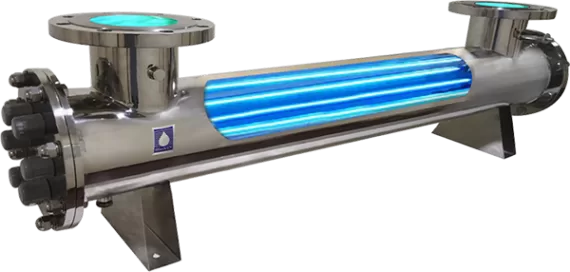- Your cart is empty
- Continue Shopping

What Is UV?
- Home /
- Page
Ultraviolet (UV) light is found occupying the portion of the electromagnetic spectrum between X-rays and visible light. The sun emits ultraviolet light however, much of it is absorbed by the earth’s ozone layer.
What is UV?
Electromagnetic radiation comes from the sun and transmitted in waves or particles at different wavelengths and frequencies. This broad range of wavelengths is known as the electromagnetic spectrum and is generally divided into seven regions in order of decreasing wavelength and increasing energy and frequency. The common classifications are radio waves, microwaves, infrared (IR), visible light, ultraviolet (UV), X-rays and gamma-rays.
Just as visible light consists of different colors that become apparent in a rainbow, the UV radiation spectrum is divided into three regions called UVA, UVB and UVC. what is UV A,B,C?
- UV-A Wavelength: 315-400 nm. UVA rays have the longest wavelengths and not absorbed by the ozone layer
- UV-B Wavelength: 280-310 nm. UVB rays are transmitted through the atmosphere, and it is mostly absorbed by the ozone layer, but some does reach the Earth’s surface.
- UV-C Wavelength: 100-280 nm. UVC have the shortest wavelengths and it is completely absorbed by the ozone layer and atmosphere. Short-wavelength UV-C is the most severe and damaging type of UV radiation.
A unique characteristic of UV light is that a specific range of its wavelengths, those between 200 and 300 nanometers (billionths of a meter), are categorized as germicidal – meaning they are capable of inactivating microorganisms, such as bacteria, viruses and protozoa.
Microorganisms are simple organic structures that readily absorb the UV-C wavelength, causing photo-disassociation (destruction). They are inactivated by UV light as a result of damage to nucleic acids. The high energy associated with short wavelength UV energy, primarily at 254 nm, is absorbed by cellular RNA and DNA. A microbes DNA (deoxyribonucleic acid) is the first to be adversely affected due to its weaker molecular bonds. In hundredths of a second it suffers irreparable damage. The subsequent loss of genetic instructions causes cell death and/or the inability to replicate, rendering them harmless. Continuous exposure causes uninterrupted degradation.
It is important as it has the capability of widespread adoption of UV light as an environment friendly, chemical-free, and highly effective way to disinfect and safeguard water against harmful microorganisms.
Is UVC safe for water?
Yes. UV light is regularly viable against all infections, microscopic organisms and protozoa. Notwithstanding, a few microorganisms, for example, Cryptosporidium and Giardia have defensive or thick cell dividers that some low force UV light frameworks can’t infiltrate.
Comparison of Ultraviolet v/s Chlorine & Ozone
| Methods | Ultraviolet | Chlorination | Ozone |
|---|---|---|---|
| Destruction | Physical | Chemical | Chemical |
| Capital cost | Low | Medium | High |
| Operating cost | Low | Medium | High |
| Maintenance cost | Low | Medium | High |
| Maintenance frequency | Low | Medium | High |
| Disinfection Performance | Excellent | Very Good | Unpredictable |
| Contact time | 1-5 Seconds | 25-45 minutes | 5-10 minutes |
| Personal Hazards | Low | Medium | High |
| Toxic Chemicals | No | Yes | Yes |
| Water Chemistry change | No | Yes | Yes |
| Residual effect | No | Yes | Yes |
